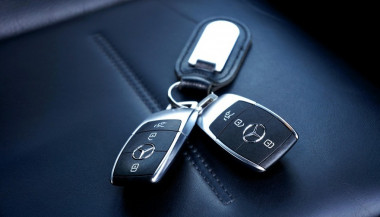Unlocking the Mysteries of Car Key Cutting
Have you ever been in a situation where you needed a spare car key or had to replace a lost one? Car key cutting is an essential process for creating duplicate keys or replacements, but it’s often misunderstood. From traditional keys to modern transponder and smart keys, the art of key cutting has evolved dramatically with advancements in technology. This guide will walk you through the key cutting process, its types, and when professional help is required, helping you navigate the complexities of car key duplication with confidence.
What Is Car Key Cutting?
Car key cutting is the process of creating a new key that matches the physical shape and specifications of your vehicle’s locks and ignition. This process involves cutting the metal key blade to fit the car’s lock mechanism precisely. For modern cars, this may also include programming the electronic components of the key, such as transponder chips or remote controls.
The method used for cutting a car key depends on the type of key and the car model. Traditional keys are simpler to cut, while transponder and smart keys require specialized tools and expertise.
Types of Car Keys and Cutting Methods
Traditional Keys
These are the classic mechanical keys used in older vehicles. Cutting these keys involves duplicating the grooves and ridges of the original key using a key-cutting machine.
Transponder Keys
Found in most modern cars, transponder keys contain a microchip that communicates with the car’s computer. After cutting the blade, these keys must also be programmed to function.
Smart Keys
These advanced keys use wireless communication to interact with the car. They don’t require physical cutting but involve programming to sync with the vehicle.
Each type of key requires a different approach and level of expertise, making it essential to know what kind of key you have before proceeding with duplication.
The Key Cutting Process: Step by Step
Identify the Key Type
Determine whether you have a traditional, transponder, or smart key. This will dictate the tools and process needed for cutting and programming.
Gather Required Information
Provide the key cutter with details about your car, such as the make, model, and year. For some keys, a Vehicle Identification Number (VIN) may be required.
Cutting the Key Blade
For traditional and transponder keys, the blade is cut using a key duplicator or a laser key-cutting machine. Precision is crucial to ensure the key fits perfectly in the lock.
Programming (if required)
For transponder and smart keys, the key must be programmed to the car’s computer system. This step may require specialized equipment or professional expertise.
When to Seek Professional Help
While traditional keys can often be duplicated at local hardware stores, transponder and smart keys typically require specialized tools and knowledge. Professional locksmiths and dealerships are equipped to handle these advanced key types, ensuring proper cutting and programming.
Reasons to choose a professional:
- Complexity: Smart and transponder keys require technical expertise.
- Accuracy: Professionals use precise equipment to ensure the key functions flawlessly.
- Programming Needs: Only trained specialists can program keys to sync with your vehicle.
Cost of Car Key Cutting
The cost of cutting a car key varies depending on the type of key and the service provider. Traditional keys are the most affordable, typically costing between $10 and $50. Transponder and smart keys, however, can range from $50 to $300 or more due to the additional programming required.
Tips to save money:
- Have a spare key: This simplifies the duplication process and reduces costs.
- Compare prices: Contact multiple locksmiths or dealerships to find the best deal.
Be Prepared for Every Key Emergency
Car key cutting is a vital service for any car owner, whether you’re duplicating a spare key or replacing a lost one. Understanding the process and knowing when to seek professional help can save you time, money, and frustration.
By staying informed and proactive, you can ensure that your vehicle remains accessible and secure, no matter what challenges arise.

 (1)_1736339781.jpg)
 (1)_1736339388.jpg)
_1751267165.png)

 (1)_1736347611.jpg)